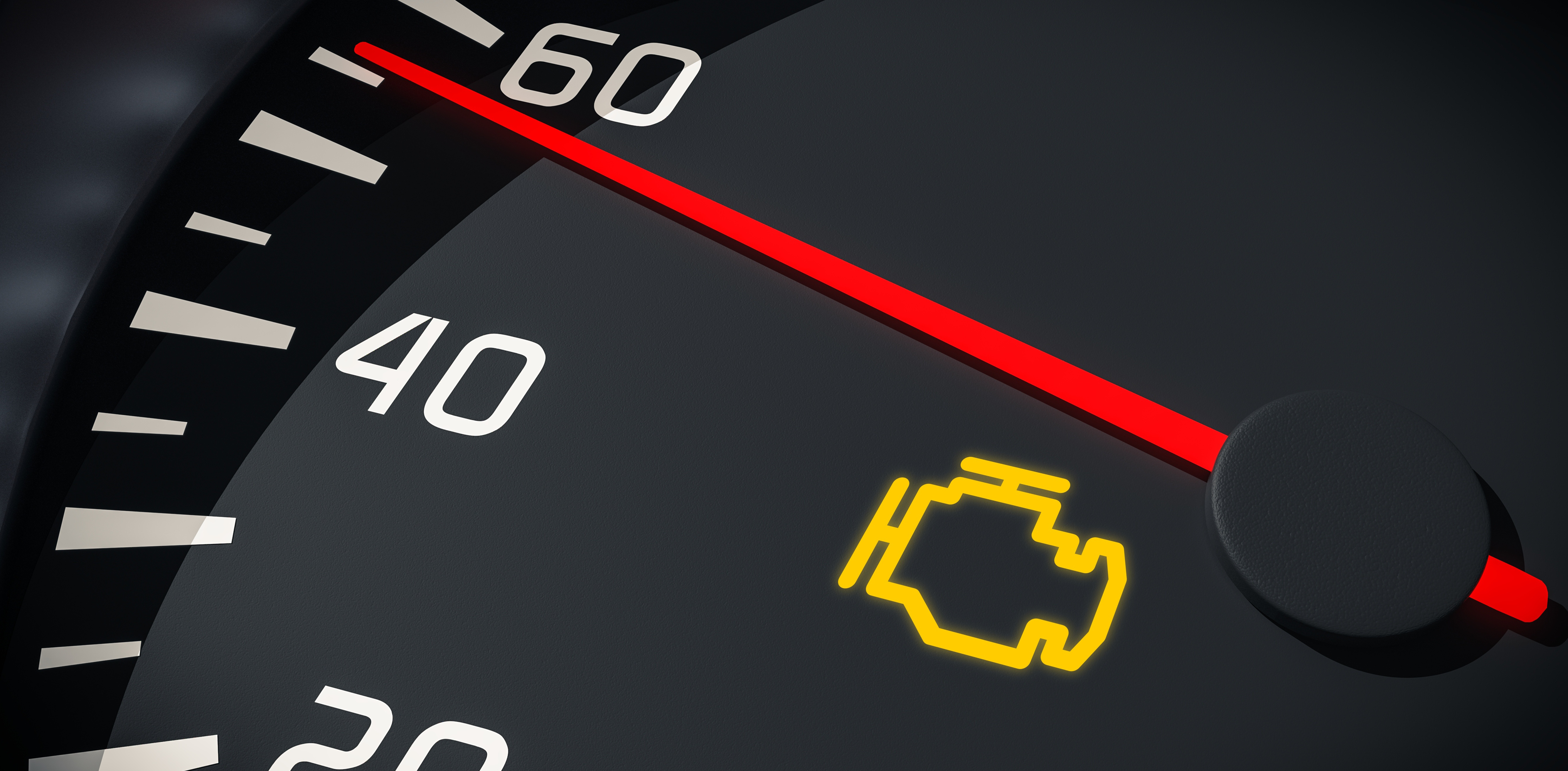

Don’t Panic … or Procrastinate
Ah, the golden glow of a Check Engine Light (CEL); more commonly known these days as the malfunction indicator light (MIL). Why does this simple dash light trigger so much anxiety in some motorists and go completely ignored by others? Does that light always mean that there is a huge repair bill coming? In this article, I’d like to provide some answers to these and other related questions.
A recent study of 2000 American motorists revealed that, of those whose vehicle’s MIL was on, 30 percent said they would wait at least a month before taking it to a shop for diagnosis. Why? Some said that there was no noticeable loss of engine performance, so they assumed the problem was not that critical. Others were concerned about potentially high diagnosis and repair bills and the inconvenience of being without their vehicle while it was in the shop. These are common reasons why many motorists procrastinate – that is, until their fuel mileage plummets, the engine loses power, or they find themselves stranded on the side of the road. Waiting too long can actually cost you more in the long run. While the MIL is technically a “warning” light, it and other warning lights should never be ignored.
Decoding warning lights
It’s not unusual to have multiple warning lights, system status lights and messages displayed in a vehicle’s dashboard, console or instrument panel. They are especially designed to help you understand how your vehicle is performing, the status of a specific system and if it’s time for routine maintenance. With so many systems to monitor these days, vehicles can have an array of over 20 different warning and status lights.
The color of a light and if it’s flashing or not indicates various levels of urgency. The most common colors are red, yellow, orange, green, and blue. The two colors that have been used most over the years are red and yellow.
- Red dash lights scream, “Stop Immediately”. A vital component needs urgent attention.
- A solid yellow warning light means “Proceed with Caution”. It’s not an emergency but serious enough that you should get the issue diagnosed and repaired soon.
- A flashing yellow light, on the other hand, is more serious. It means there is something seriously wrong with the system it’s tied to. It’s best to pull over when it’s safe to do so and call a tow truck. Driving a vehicle with any flashing yellow light can be costly and dangerous.
Understanding the MIL
The MIL is a yellow warning light. If it is not flashing, you have some time to get the vehicle to a shop or fix the problem yourself. I’d like to note here that sometimes a problem will remedy itself and the vehicle’s computer will turn off the MIL. It may take a few days. But, if a few days have gone by and the light is still on, it’s time to diagnose and repair the issue.
If the MIL is flashing, there is a more serious problem with the vehicle’s emission system, transmission or engine management system. And, whatever is going wrong could also harm other components or pose a serious safety risk. You should pull over immediately and have the vehicle towed to a certified repair shop for diagnosis.
Does an illuminated MIL automatically mean high repair costs?
Absolutely not! One of the most common reasons the MIL illuminates is because the gas cap is loose, missing or defective. That’s a simple and inexpensive fix. NOTE: If your MIL comes on, always check your gas cap first, especially if you just filled your tank within the prior couple of days.
The MIL may also illuminate because of an emissions control or engine management system malfunction. Did you know that the costs to diagnose and repair problems in these systems may be covered by the Federal and State Emissions Warranty? Depending on what state you live in, this warranty can cover emissions-related equipment up to 8 years or 80,000 miles. To determine if your vehicle is covered under the Federal or State Emissions Warranty, check your vehicle’s warranty/owner’s manual or verify your vehicle’s eligibility with the dealership’s service department.
No warning lights mean my vehicle is safe to drive, right?
Unfortunately, no. It just means that all the components and systems monitored by the vehicle’s numerous computers are working properly. If a suspension component is about to break, the tires are dangerously worn or the brakes are about to fail, there is no warning light to alert you that the vehicle is unsafe to drive. Only regular maintenance and inspections can catch these types of potential problems. And speaking of maintenance… you may see a “Service Engine Soon” or “Service Now” light (usually a yellow wrench). That light is triggered by reaching a certain mileage and/or time frame. It is not really intended to be a warning light – just a reminder that it’s time to do whatever scheduled maintenance the vehicle’s manufacture recommends. Regular maintenance is a proactive way to not only spot potential issues, it also ensures your vehicle is performing at its best.
Bottom Line
So, what should you do if your MIL comes on? Don’t panic or procrastinate. Even if the MIL is solid and is not flashing, it’s a good idea to get the vehicle diagnosed as soon as possible. Also, keep your vehicle safe and reliable by doing all the manufacturer's recommended scheduled maintenance. If you do, your vehicle will reward you with thousands of trouble-free miles.
Not an ALLDATAdiy customer? Learn how a subscription could help you. ALLDATAdiy provides access to repair information on over 44,000 engine-specific vehicles, find yours. Return to see more DIY Helpful Tips.







